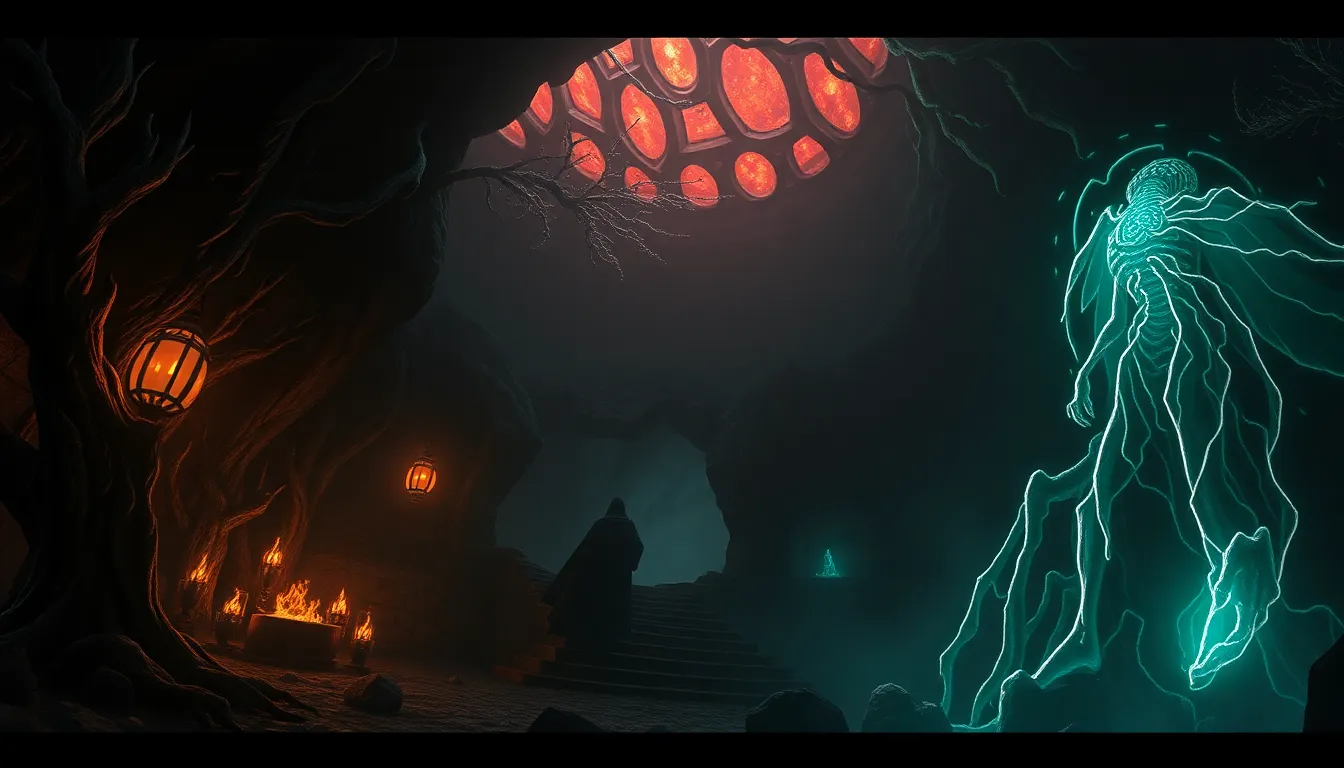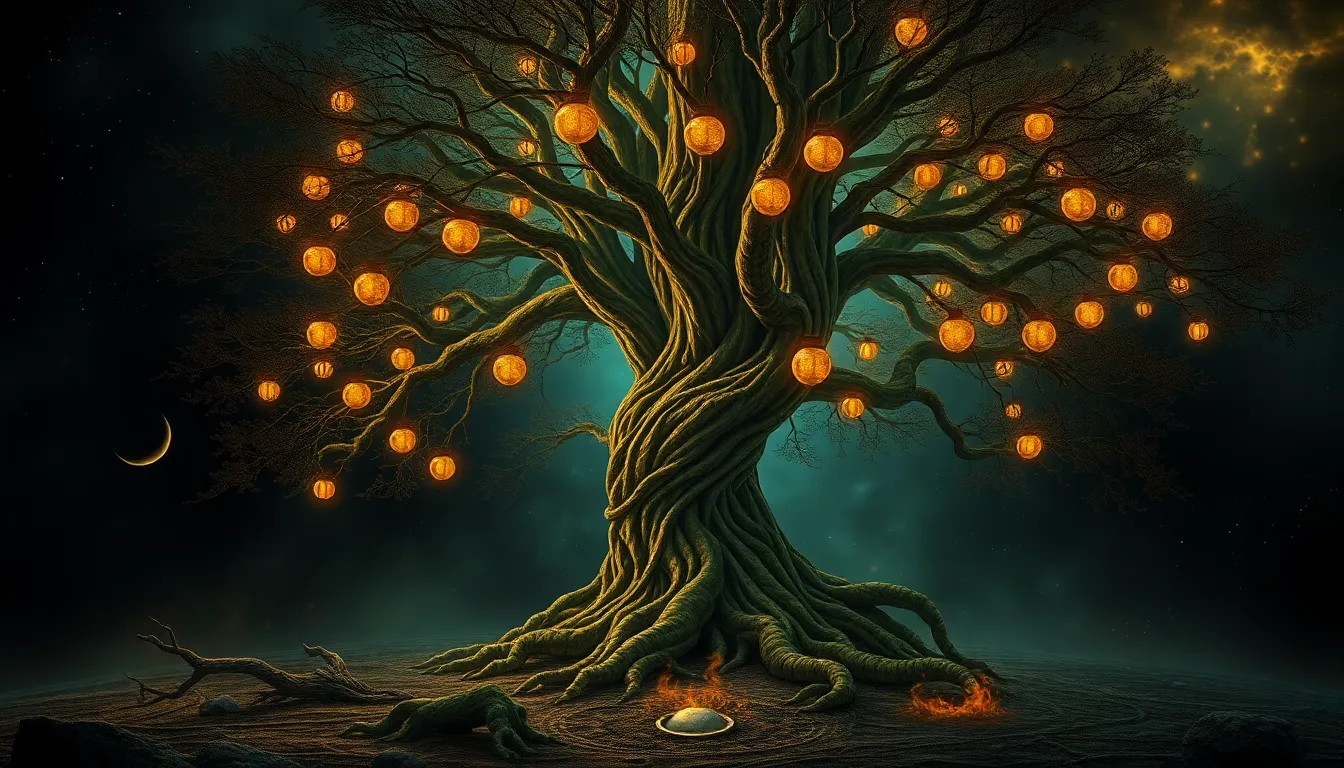Underworld Myths: The Stories That Haunt Our Collective Memory
I. Introduction
Underworld myths are narratives that explore the realms beyond life, often depicting journeys through shadowy landscapes inhabited by the souls of the departed. These myths serve to illuminate the cultural perceptions of death, the afterlife, and what lies beyond our earthly existence. They are significant in providing insight into how various societies cope with mortality and the unknown.
This article aims to delve into the rich tapestry of underworld myths from diverse cultures, examining their historical context, common themes, psychological interpretations, and their enduring presence in literature and art. By exploring these myths, we can better understand their psychological impact on humanity and their relevance in modern society.
II. Historical Context of Underworld Myths
A. The Role of the Underworld in Ancient Civilizations
Throughout history, ancient civilizations crafted intricate narratives about the afterlife that reflected their beliefs and values. The underworld often served as a place of judgment, punishment, and sometimes, redemption.
1. Mesopotamian views of the afterlife
In Mesopotamian culture, the afterlife was perceived as a dreary place known as the “House of Dust,” where souls led a shadowy existence. The dead were believed to be judged by the goddess Ereshkigal, and their fate was sealed based on their actions during life.
2. Egyptian beliefs and the concept of the Duat
Contrastingly, ancient Egyptians believed in a more elaborate afterlife, wherein the Duat represented a realm where the deceased faced trials before entering the Field of Reeds, a paradise for the righteous. The weighing of the heart against a feather symbolized moral judgment, determining one’s eternal fate.
B. Evolution of Underworld Myths Through the Ages
Underworld myths have transformed significantly over time, evolving from ancient texts to modern interpretations. As beliefs about death have changed, so too have the stories surrounding the underworld, adapting to the cultural and social contexts of the times.
1. From ancient texts to modern interpretations
Many contemporary representations of underworld myths draw on classical sources, yet they often reinterpret themes to resonate with modern audiences, reflecting ongoing existential concerns.
III. Major Underworld Myths from Different Cultures
A. Greek Mythology: Hades and the River Styx
In Greek mythology, Hades is the god of the underworld, overseeing a realm divided into different sections, including Elysium and Tartarus. The River Styx, a boundary between the world of the living and the dead, plays a crucial role in this mythos, requiring payment for passage.
B. Norse Mythology: Hel and the Realm of the Dead
In Norse mythology, Hel is both the name of the goddess and the realm where those who did not die in battle reside. It is depicted as a cold, dark place, contrasting with the glorious afterlife of Valhalla.
C. Hindu Beliefs: Naraka and the Cycle of Rebirth
Hinduism introduces the concept of Naraka, a temporary realm of punishment for the wicked before rebirth. This cyclical nature of life and death emphasizes karma and moral responsibility.
D. Aztec Mythology: Mictlan and the Journey of the Dead
Aztec beliefs surrounding death include the underworld Mictlan, where souls undergo a four-year journey before reaching their final resting place. This journey involves trials that reflect the soul’s life choices.
IV. Common Themes in Underworld Myths
A. The Journey of the Soul
A prevalent theme in underworld myths is the journey of the soul, often depicted as a perilous path that reflects the soul’s moral and ethical choices during life.
B. Duality of Life and Death
Many myths explore the duality of life and death, emphasizing their interconnectedness and the idea that one cannot exist without the other.
C. Punishment and Redemption
Underworld narratives frequently address themes of punishment and redemption, illustrating consequences based on one’s actions and decisions.
D. Guardians and Guides of the Underworld
Myths often feature guardians or guides, such as Charon in Greek mythology, who serve to assist or challenge souls in their passage through the underworld.
V. Psychological Interpretation of Underworld Myths
A. Archetypes and Their Influence on Human Behavior
Underworld myths resonate with archetypal themes that influence human behavior, reflecting universal struggles related to mortality and the psyche.
B. The Shadow Self: Jungian Perspectives
From a Jungian perspective, the underworld can symbolize the shadow self, representing the darker aspects of human nature that must be acknowledged for psychological growth.
C. Fear of Death and the Unknown: Psychological Impacts
These myths address the innate fear of death and the unknown, providing frameworks through which individuals can process existential anxieties.
VI. Underworld Myths in Literature and Art
A. Depictions in Classical Literature (e.g., Dante’s Inferno)
Classical literature, such as Dante’s “Inferno,” provides profound insights into the human condition, using underworld imagery to explore themes of sin, morality, and redemption.
B. Influence on Modern Literature and Pop Culture
Modern literature and pop culture continue to draw inspiration from underworld myths, often reinterpreting them to address contemporary issues surrounding death and morality.
C. Artistic Representations Throughout History
Artistic depictions of the underworld have varied widely, reflecting the cultural context and values of the time, from ancient pottery to modern films.
VII. The Role of Underworld Myths in Modern Society
A. How Underworld Myths Shape Contemporary Beliefs
Underworld myths remain relevant today, shaping contemporary beliefs about death and the afterlife and influencing various religious and philosophical systems.
B. The Use of Myths in Addressing Mortality and Grief
These myths provide a framework for individuals to process grief and mortality, offering narratives that help contextualize loss and the cycle of life.
C. Underworld Myths in Rituals and Ceremonies
Many cultures incorporate underworld myths into rituals and ceremonies, using them to honor the dead and navigate the complexities of grief.
VIII. Case Studies: Specific Myths and Their Cultural Impact
A. The Legend of Orpheus and Eurydice
The tragic love story of Orpheus and Eurydice underscores themes of love, loss, and the power of music, illustrating the deep emotional ties humans have to the underworld.
B. The Myth of Persephone and Seasonal Change
The myth of Persephone’s descent into the underworld explains the cycle of seasons, linking agricultural practices with the themes of life, death, and rebirth.
C. The Role of Charon in Greek Mythology
Charon, the ferryman of Hades, symbolizes the transition between life and death, illustrating the necessity of recognizing mortality in human existence.
IX. Critiques and Reinterpretations of Underworld Myths
A. Feminist Perspectives on Underworld Myths
Feminist critiques of underworld myths highlight the roles of female figures, such as Persephone and Ereshkigal, exploring themes of agency and representation in the context of patriarchal narratives.




